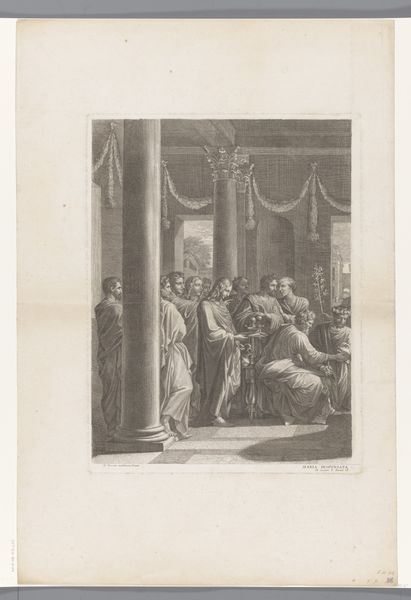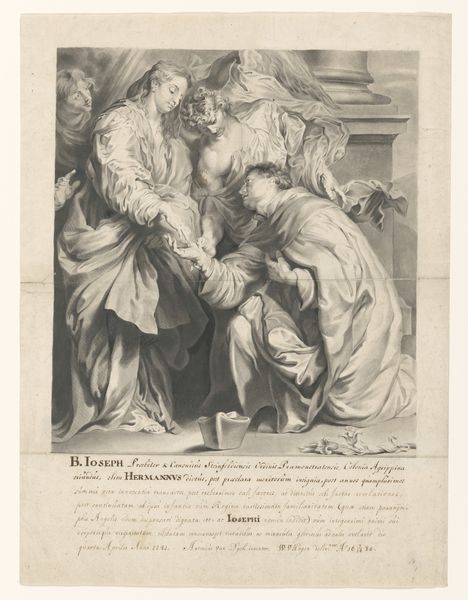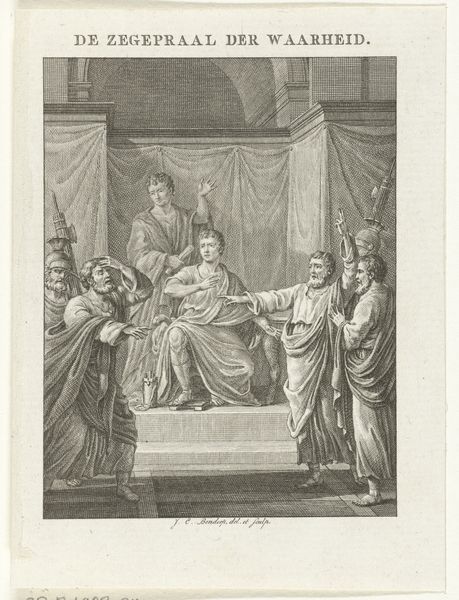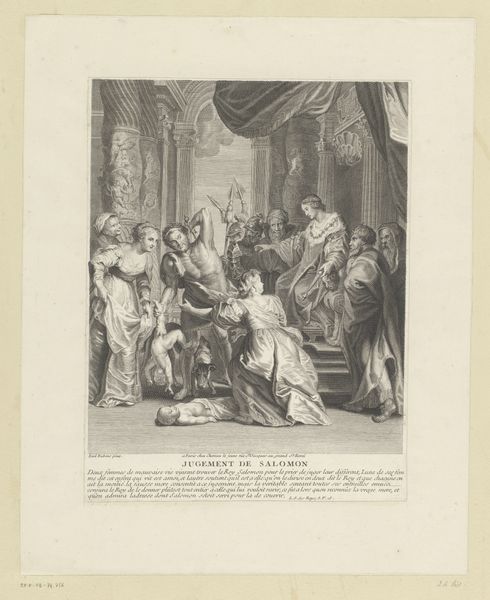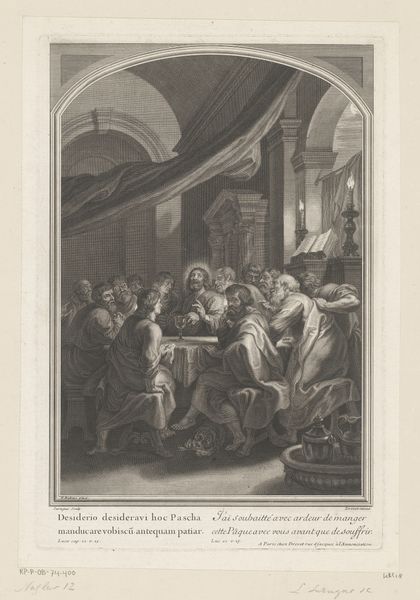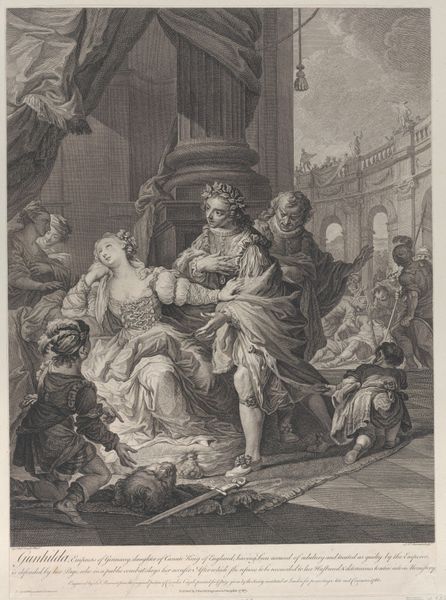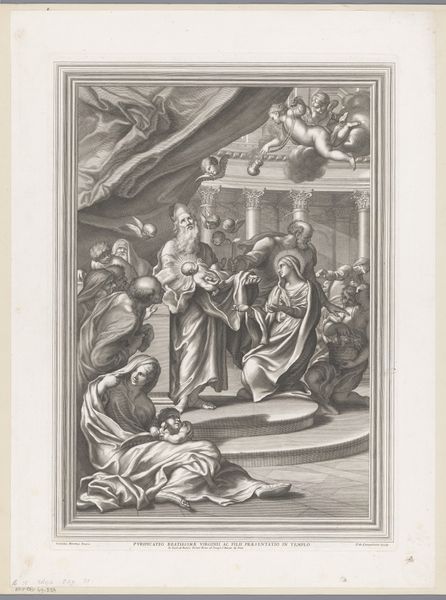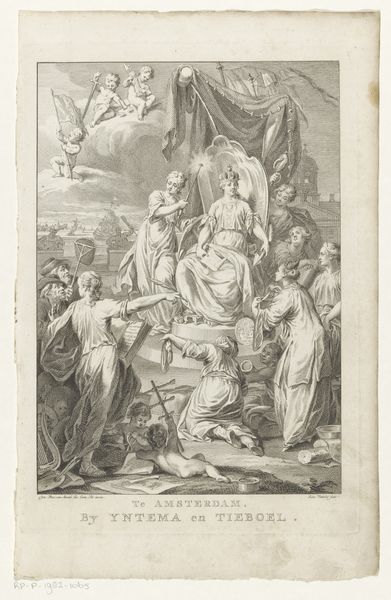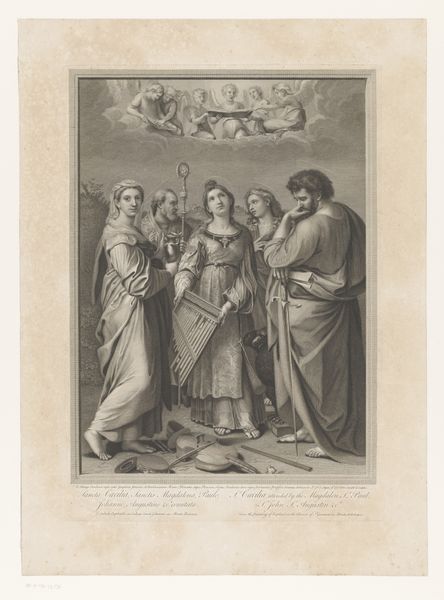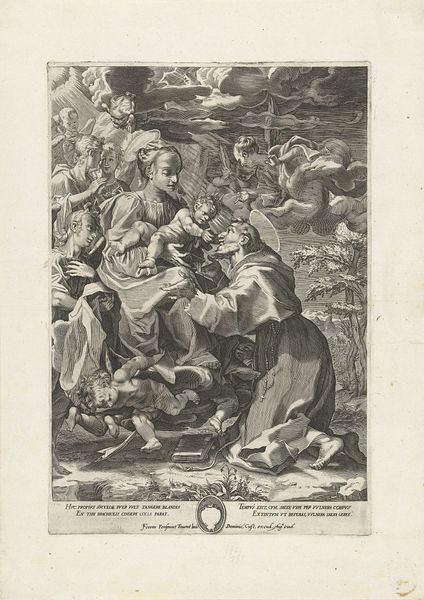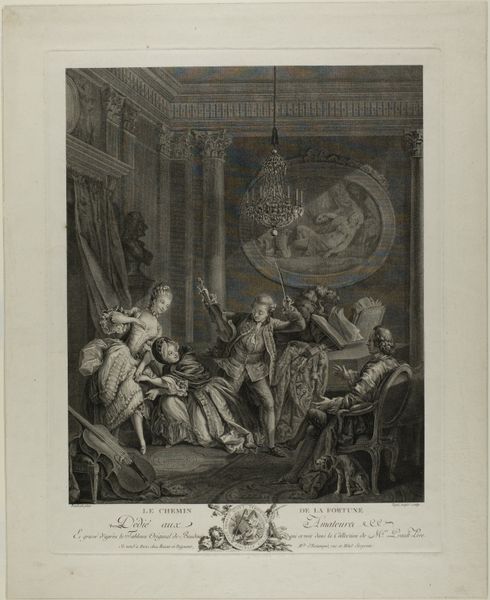
Dimensions: height 553 mm, width 377 mm
Copyright: Rijks Museum: Open Domain
Curator: "Paus Gregorius omringd door kardinalen," or "Pope Gregory Surrounded by Cardinals." This engraving, dating back to 1770, is by Simon Charles Miger. The image speaks to the Baroque style with its elaborate composition. What's your first take on it? Editor: Wow, immediately, it feels very...structured. Like everyone has their place, you know? There’s a clear hierarchy in how they're positioned. I'm getting a powerful sense of tradition here, or rather, the weight of it. It seems everyone, including Pope Gregory, must embody the significance of the Papacy, rather than his own individuality. Curator: Absolutely, and that structural element echoes throughout, particularly with the visual weight given to the papal regalia. Think of how it is contrasted with the submissive poses of the monks surrounding Pope Gregory, emphasizing obedience and reverence towards religious institutions. Consider how each symbol - the tiara, the crozier, the heavy vestments - has accrued layers of meaning. They point towards deep-rooted values within the Catholic church. Editor: It's really powerful how Miger uses light, isn't it? Highlighting certain faces while leaving others in shadow, subtly steering our gaze and interpretations. The way it falls upon the Pope almost suggests a kind of...divine spotlight. Curator: Precisely. The contrast contributes to that sense of otherworldly authority, also acting as a strong signal to a viewer literate in a visual language centered around hierarchy, sacred authority, and the power of symbolism. Notice too, how Miger used the tools of Baroque composition to guide our interpretation of papal power through a narrative moment. Editor: It's funny, in a way, it feels timeless, doesn't it? That interplay of light and shadow, those very deliberate poses... they could resonate across centuries, albeit in varying ways. I wonder how someone living then would read all the symbolism so obviously placed in front of them compared to how we would now? Curator: Time inevitably shifts meaning. But at its heart, this work tries to visualize power, belief, and continuity across a long, sacred tradition, still speaking volumes even now. Editor: Definitely gives you a lot to think about, even after just a quick look.
Comments
No comments
Be the first to comment and join the conversation on the ultimate creative platform.
